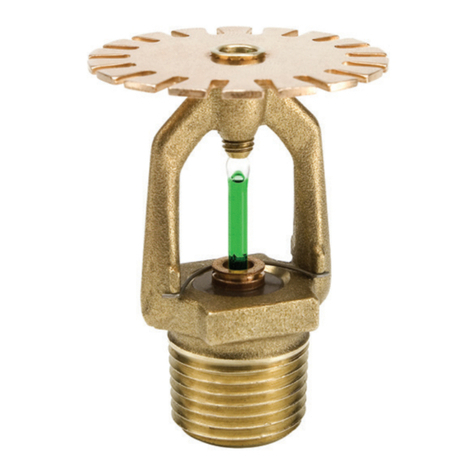
Lee Valley Tools Ltd. Ottawa ON K2H 1C2 Canada leevalley.com
© Lee Valley Tools Ltd. 2018 442 INS-138_D
If the system has been off for a period of time and exposed to sunlight, the standing water in
the hose can get quite hot. We suggest running the water at partial pressure when the hose is
first turned on.
Sprayer Adjustment
Adjust the dials on your sprayers so the spray covers the desired area. You can also turn the
sprayer relative to the hose to adjust the direction of spray, as long as this adjustment is slight
and rarely done so as to avoid loosening the sprayer or stripping the hole.
Sprayers can be removed from a hole and replaced with one of another style (e.g., if you want
to switch from a 180° to a 90° sprayer). However, the holes in your hose can take only a certain
number of changes before they begin to leak.
Adding to the System
Additional sprayers, sprinkler hose and hole plugs are available to let you expand your
sprinkling system to suit the changing needs of your garden. To add another length of hose,
simply unscrew the cap from the first compression end and attach it to the hose connector of
the second kit.
When adding to your system, keep in mind that, depending on the water pressure and flow
available, your water system will be able to support only a certain number of sprayers (at full
flow) before you experience decreased coverage.You can expect a slight decrease in coverage
after installing more than 7 sprayers, and a decrease to half of the range by the time you have
20 sprayers on a single water line.
Maintenance
Periodically check your filter washer and clean it of any dirt that may have accumulated. It is
also a good idea to flush your system once in a while.
You can leave your fence-mount sprinkler up over the winter. However, if you are in a region in
which the temperature can drop below freezing, you must properly drain your hose and sprayers
of any standing water.
If you decide to take the sprinkler down, keep in mind that when you go to remount your
hose, it may be difficult to realign it exactly as you had it previously positioned.
Accessories
XB829 Mounting Clips (with screws), pkg. of 10
XC311 Backflow Preventer
XB821 50'Hose with Connectors
XB823 90° Sprayers, pkg. of 2
XB825 180° Sprayers, pkg. of 5
XB827 Hole Plugs, pkg. of 10























